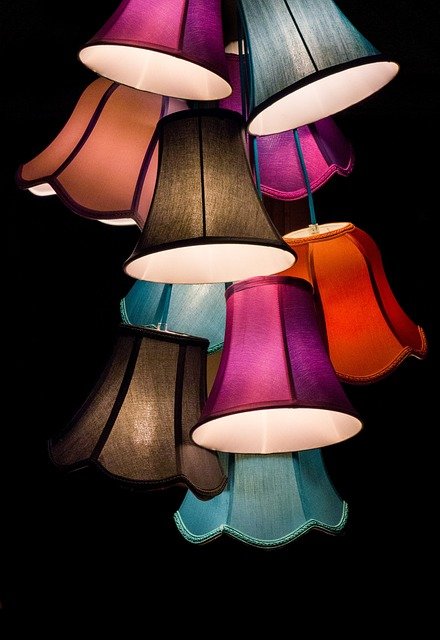Illuminating Your World: A Comprehensive Guide to Lamps
Lamps are essential fixtures in our daily lives, providing illumination for various activities and creating ambiance in our living spaces. From traditional incandescent bulbs to modern LED technology, the world of lighting has evolved significantly over the years. This article explores the different types of lamps, their applications, and the latest advancements in lighting technology.

-
Floor lamps: Ideal for ambient lighting in living rooms and bedrooms, floor lamps come in various styles and can illuminate larger areas effectively.
-
Wall-mounted lamps: These space-saving options are great for hallways, bathrooms, and bedrooms, offering both functional and decorative lighting solutions.
-
Pendant lamps: Suspended from the ceiling, pendant lamps are popular in kitchens, dining areas, and entryways, adding a stylish touch to any space.
-
Desk lamps: Designed for workspaces, these lamps provide focused illumination for tasks like reading, writing, or computer work.
Each type of lamp serves a specific purpose and can be customized to fit various interior design styles and lighting requirements.
How have LED bulbs revolutionized the lighting industry?
LED (Light Emitting Diode) technology has transformed the lighting landscape in recent years. These energy-efficient bulbs offer numerous advantages over traditional incandescent and fluorescent options:
-
Energy efficiency: LED bulbs consume significantly less electricity, resulting in lower energy bills and reduced environmental impact.
-
Longevity: With an average lifespan of 25,000 to 50,000 hours, LED bulbs last much longer than conventional alternatives, reducing replacement frequency and costs.
-
Versatility: LED bulbs are available in various color temperatures, allowing users to customize the ambiance of their spaces.
-
Instant illumination: Unlike some fluorescent bulbs, LED lights reach full brightness immediately upon activation.
-
Durability: LED bulbs are more resistant to shock, vibration, and temperature fluctuations, making them ideal for various applications.
The widespread adoption of LED technology has led to significant improvements in energy efficiency and lighting quality across residential, commercial, and industrial settings.
What factors should you consider when choosing a lamp?
Selecting the right lamp involves considering several key factors to ensure optimal illumination and aesthetic appeal:
-
Purpose: Determine whether the lamp will be used for task lighting, ambient lighting, or accent lighting to guide your choice.
-
Room size and layout: Consider the dimensions of your space and furniture arrangement to select an appropriately sized lamp.
-
Light output: Check the lumens rating to ensure the lamp provides sufficient brightness for your needs.
-
Color temperature: Choose between warm (2700-3000K), neutral (3500-4100K), or cool (5000-6500K) light to create the desired atmosphere.
-
Style and design: Select a lamp that complements your existing decor and personal taste.
-
Energy efficiency: Look for Energy Star-certified lamps to maximize energy savings and reduce environmental impact.
-
Dimming capabilities: If you desire adjustable lighting levels, ensure the lamp is compatible with dimmer switches.
By considering these factors, you can choose a lamp that not only meets your functional needs but also enhances the overall aesthetic of your space.
How can smart lighting technology enhance your lamp experience?
Smart lighting technology has introduced a new level of convenience and customization to the world of lamps. These innovative systems offer features such as:
-
Remote control: Adjust your lighting from anywhere using smartphone apps or voice commands through virtual assistants like Alexa or Google Home.
-
Scheduling: Set timers to automatically turn lamps on and off, simulating occupancy when you’re away or creating a gentle wake-up routine.
-
Color-changing capabilities: Many smart bulbs allow you to choose from millions of colors, enabling you to set the perfect mood for any occasion.
-
Energy monitoring: Track your energy consumption and make informed decisions to reduce your carbon footprint.
-
Integration with other smart home devices: Coordinate your lighting with other systems like thermostats, security cameras, and entertainment systems for a seamless smart home experience.
Smart lighting technology adds a new dimension to traditional lamps, offering unprecedented control and customization options for users.
What are the latest trends in lamp design and functionality?
The lighting industry continues to innovate, with several exciting trends emerging in recent years:
-
Minimalist designs: Clean lines and simple shapes are gaining popularity, reflecting a broader trend towards minimalism in interior design.
-
Sustainable materials: Eco-friendly lamps made from recycled or biodegradable materials are becoming increasingly common.
-
Multifunctional lamps: Fixtures that combine lighting with other features like wireless charging pads or built-in speakers are on the rise.
-
Biophilic lighting: Lamps designed to mimic natural light patterns are gaining traction, supporting circadian rhythms and overall well-being.
-
Sculptural forms: Statement lamps that double as art pieces are becoming popular focal points in interior design.
These trends reflect a growing emphasis on both form and function in lamp design, catering to consumers’ evolving preferences for aesthetics, sustainability, and technology integration.
In conclusion, lamps play a crucial role in our daily lives, providing essential illumination and contributing to the ambiance of our living spaces. From energy-efficient LED bulbs to smart lighting technology and innovative designs, the world of lamps continues to evolve, offering an ever-expanding range of options to suit every need and preference. By understanding the various types of lamps, considering key factors when making a selection, and staying informed about the latest trends, you can make informed decisions to enhance your lighting experience and create the perfect atmosphere in your home or workspace.






